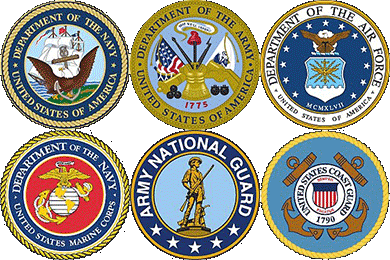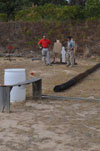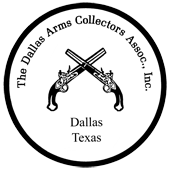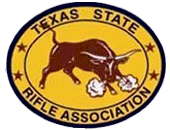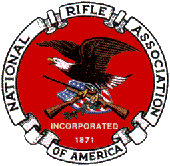
This page is devoted to products that our members have had the opportunity to to use first hand and give their honest evaluation of that item or items. Please submit your reviews and pictures of the product to Paul at CARGO@att.net.
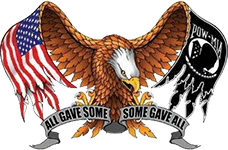
Please send us your reviews........
Please send us your reviews........
Review by "Doc" Brizendine
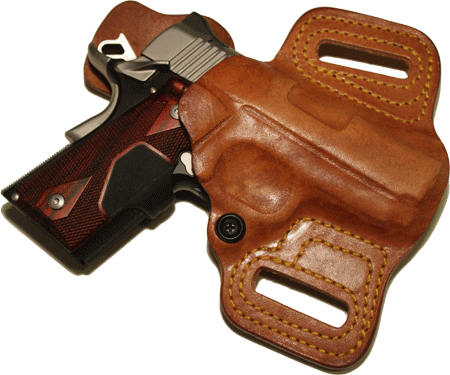
I had to get this!
I just got my new Kimber Ultra CDP II LG. It has been my dream gun for several years and I decided had to have the very best holster I could get for it. I did a lot of searching for the best quality and best fit. I chose the High Noon Slide Guard made from Horse Hide (more on this later).
Pros:
Beautifully crafted, detailed boning, stitched perfectly, fit my gun without any break in, thick heavy duty leather for some serious use and wear
Cons: None that I can find, unless you want to count the new leather smell??
http://highnoonholsters.com
The first thing I found out in my searching, is that not very many makers make custom holsters for my Kimber. A bunch of them will make generic holsters that will kind of fit, but I would never be satisfied with less than the best for my new toy. This is not an inexpensive holster and, in my experience, with holsters and knive sheaths, you mostly get what you pay for. Like most quality, custom holsters, there will be a waiting time to get yours, but it is well worth it.
I particularly wanted a holster with precise, detailed boning. I believe it helps the fit and enhances the beauty of the holster. As you can see, you certainly get this. This is the first holster I've had that had boning even on the slide guard and back side.
I wanted a holtster that had good protection for the slide for two reasons. I am not petite and don't like a gun digging into my side all day. I perspire occasionally and don't want that all over my prized carry guns. This holster has the best I've seen.
The Slide Guard has a 15deg forward cant and a tension adjustment screw, which I didn't need to adjust.
Did I mention Horse Hide? All my previous holsters are made with cow hide. I wanted something a little more durable. According to High Noon's website, Horse Hide has the natural ability to repel moisture, because of the dense cell structure of the hide. This natural abiltiy to repel moisture make it particularly useful for inside the waistband carry or in moist or high humidity. Due to it's non-porous dense nature, horse hide is more complex to form than ordinary cow hide.
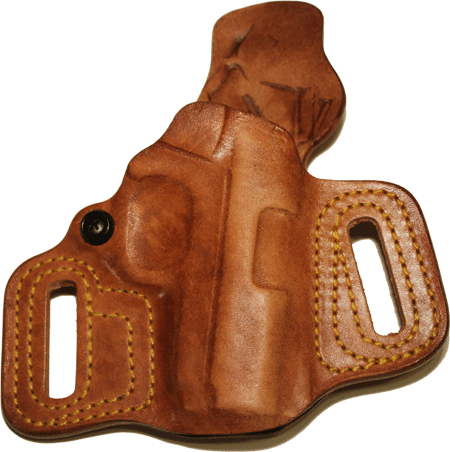 Notice the detailed boning and quality stitching. Not one stitch out of place. The Slide Guard is an open muzzle design that prevents moiture and debris from accumulating in the holster. It is a very high carry and for me, that is a very good plus. It makes concealed carry much easier.
Notice the detailed boning and quality stitching. Not one stitch out of place. The Slide Guard is an open muzzle design that prevents moiture and debris from accumulating in the holster. It is a very high carry and for me, that is a very good plus. It makes concealed carry much easier.
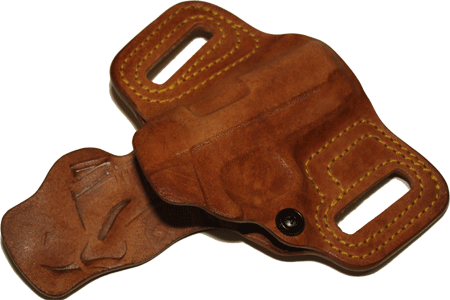 This picture was made to point out the boning in the Slide Guard portion that protects the back, upper side of the gun. Notice that it even provides for the safety and beaver tail.
This picture was made to point out the boning in the Slide Guard portion that protects the back, upper side of the gun. Notice that it even provides for the safety and beaver tail.
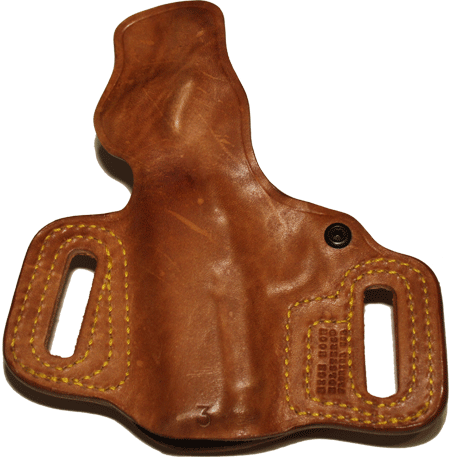 I made this picture to display the boning on the back of the holster. The pale lines you see are actually a natural part of the hide and not a blemish made by use. I like the character it adds to the piece.
I made this picture to display the boning on the back of the holster. The pale lines you see are actually a natural part of the hide and not a blemish made by use. I like the character it adds to the piece.
Fill this space with your review!
Please send us your reviews........
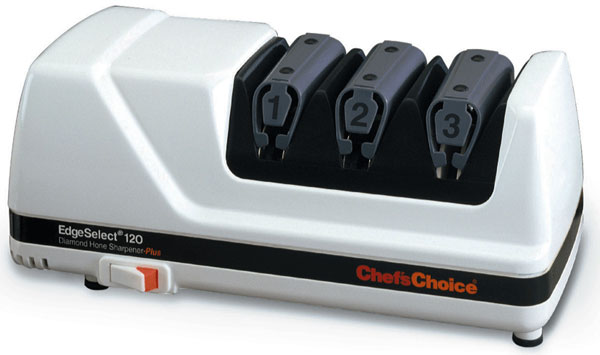
I showed this at a monthly meeting where I demonstrated knife sharpening. If you can only have one sharpener and you want to have perfect results every time and you want ease of use - this is for you.
"Important Note"
If you want to have success with this sharpener, read the manual and "Develop a distinct burr along knife edge before stropping in Stage 3." Getting a burr is the "secret" to getting a sharp knife regardless of the method you use to sharpen.
Chef'sChoice® Diamond Hone® EdgeSelect® #120:
This professional electric knife sharpener is another sharpening breakthrough. It incorporates conical 100% diamond coated disks in Stages 1 and 2 and a revolutionary stropping/polishing disk in Stage 3. In just seconds, an edge of unprecedented sharpness and durability is obtained on fine edge (straight edge) and serrated knives. The flawless, highly polished fine edge can be customized to suit the cutting task. High precision elastomeric angle guides eliminate all guesswork. Three year limited warranty.
Click Below for more information.
Chef's Choice
Doc Brizendine
Fill this space with your review!
Fill this space with your review!
Review of TacFrog Global Combat Handgun Course
By Paul Curtis
I had received an e-mail from a friend that knows Scott at First Baptist Church Wylie. I contacted Scott via e-mail and based on a number of things, I decided that this was a class that I wanted to attend.
Before class, Scott sent out a number of e-mails and the first note had an assignment for the class to memorize before the class started:
"Do I have the slack out?"
"Do I have the front sight?"
"Would I make the shot?"
Scott send out the gear list which included:
Eye and ear protection (plugs and muffs were required on the range).
A pistol in good working order. (Revolvers are not prohibited however the class would be very difficult to take with a 5 or 6 shot revolver.)
Just in case of a pistol failure, a second pistol is recommended.
350+/- rounds of good quality / safe ammunition.
Support gear: a strong side holster (shoulder holsters are prohibited), magazine pouch or pouches, 3 or more 10 + round magazines
Casual clothes
Water, lunch and snacks.
Any other equipment to make being out in the weather comfortable.
We gathered at the community center of First Baptist Church of Wylie at 7:00 am on a Saturday morning. In the parking lot were half a dozen or so cars and trucks with the drivers in a small group, talking amazingly enough about guns and shooting! The Instructor, Scott Phillips, rounded up the class and we caravanned the hour or so to a private range outside of Canton .
When we arrived at the range the other half of the class was already unpacking their gear.
First was a safety briefing: Scott and the TacFrog team run a "Hot Range" which means that every pistol is considered loaded and ready at all times. You are not to remove your firearm, from the holster at any time other than at the firing line. This was different from a public range and took a little getting used to for some of the students, however, there instructors were always first and foremost concerned for range safety for everyone’s sake.
We moved into a well lit, air conditioned class room for an introductory briefing from Scott, JD and Jim (the owner of the range). Scott gave a synopsis of his military and law enforcement background. JD, the second instructor with TacFrog, gave a very brief synopsis of his law enforcement background. Jim provided his law enforcement and training background as well as a summary of Tactical & Defensive of Texas , the business that owns the range.
After introductions, we started in with a discussion of the TacFrog mantra:
"Do I have the slack out?"
"Do I have the front sight?"
"Would I make the shot?"
Scott explained that if we would keep an open mind, listen to the instructors, follow their directions and trust that their method of training would make us better shooter, that at the end of the day we would indeed be more proficient with our pistols.
The first shooting we did was against the clock shooting steel silhouettes at 20 yards. This was simply a measure of our shooting ability with a shot timer used to measure our beginning proficiency. This is where another mantra of TacFrog came into its own, "Slow is smooth & smooth is fast"
We had 12 shooters of all backgrounds, ages and abilities. At this point the instructors were just taking inventory of our skills and equipment and our ability to listen to range commands and follow them safely.
Following the initial drill we all reloaded our magazines and move to the 7 yard firing line. The entire class was shot at 7 yards (except the final part of the day, more on that later).
We stood before 12 large targets with approximately 8 - 8 inch black circle on each. Scott and JD instructed us on grip and hand placement. The grip that they teach is a two handed fighting grip. It is different from any other grip that I have been taught; at first it was uncomfortable because it was new however it soon became obvious why he uses that grip. (Since the class I have watched the Army Marksmanship Unit and US Marine Corps snipers on TV and without fail they all use the same grip that Scott was teaching.)
After grip we learned about our stance, Scott teaches a fighting stance not some formal precision shooting stance it allows you to absorb recoil, move when you need to and presents a slightly smaller target for the bad guys. Again at first it was uncomfortable because it was new but it made sense the more that you used the shooting stance.
The next task was for us to empty our pistols. Scott and JD have a very specific method of clearing your pistol, drop the magazine, and then rack and release the slide at least 3 times. This is designed so that after the 3rd slide rack you still have bullets flying out after the first time, you forgot to remove the magazine!
After you showed the instructor that your pistol was empty, you gripped the pistol pointed it at the target and got into the shooting stance. Either Scott or JD worked with each student and (with an empty pistol) they pushed the firearm from the muzzle into the hands of each student simulating recoil. During this exercise they offered tips to improve your stability and stance to better keep your balance and absorb recoil.
Next we talked about vision. What is your eye dominance? Scott took the group through the options for right and left handed shooters and figuring out what your dominant eye is. From there we talked about shooting with both eyes open. This was by far the most difficult thing for me to adjust to. Many years of one eye shooting caused me to have to consciously think about keeping both eyes open and then making sure that I have the front sight in focus with my dominant eye. It does take some practice to get this working right.
At last bullets down range!
The first exercise at the paper targets was a single shot from the high ready using the TacFrog Mantra:
"Do I have the slack out?"
"Do I have the front sight?"
"Would I make the shot?"
We all said the mantra out loud as we went through the stages of the shot. Pulling the pistol into the firing position taking the slack out of the trigger, focusing on the front sight and then deciding whether or not to continue pulling the trigger all the way through.
After breaking the shot, "FOLLOW THROUGH!" was a constant reminder that even through we had put a bullet down range, we always repeated the process to the point of "Would I make the shot?" and in this case, no, you didn't need to shoot again so you relaxed and went back to the high ready.
We went through this drill for the first few magazines, one shot at a time.
Magazine changes are very controlled and very well choreographed. While you keep your eyes on the target, you drop the empty magazine, with your support hand, you grab a magazine from your pouch, using your fingers to index the bullets you bring it up to your pistol that is at eye level, you quickly transition your eyes to the pistol to see that you are inserting the magazine, slam it home (not gently place it in the pistol) rack and release the slide and eyes back on target and pistol back up ready for another shot if necessary. Done correctly, it takes less time to do it than type or read it.
After the drill was done, we all made our pistols safe and all repeated "Make them safe!" We headed back to the bench to reload magazines and listened to Scott and JD about the next exercise and then started shooting.
And so the day progressed.
Single shots were followed by single shot, then double shots then single, double and triple shots, we went to holstering the pistol between shots, drawing from the holster and reloading by feel alone all the time working on our stance, grip, watching our reloads and all of us saying out loud or to ourselves, "Do I have the slack out?" "Do I have the front sight?" "Would I make the shot?"
Lunch was onsite in the training room.
The discussion was positive and very firearms centered.
After lunch we continued the same pattern, one more incremental step in training, make lots of shots and learning by repetition. The targets changed sizes; we went to single shots on multiple targets, then multiple shots on multiple targets and all the while we kept on honing our skills with the pistol as we went.
At the end of the day, we went back against the clock shooting steel silhouettes at 20 yards.
After that we were allowed to shoot at the steel targets that were part of the range that we were not using.
My observations:
About the pistol and ammo: the recommendation for pistol was open to each student and I saw 1911s (several Kimbers that I saw), a Taurus semi-auto, Springfield XDs, Glocks and an H&K. I would recommend a full sized semi-auto as this class has a lot of shooting and reloading. The reloading requirement is what limits the use of a revolver for the class. There are stages that require 10 rounds to be fired, drop the magazine, reload and fire that magazine empty and then reload again until you run out of magazines. 30 rounds plus or minus in one exercise. It would be very difficult to keep up with the class with a revolver.
During my class, all of the guns that I observed on the line were full sized pistols in 9mm or larger calibers.
350 rounds of ammo was not enough, I brought 500 rounds of 9mm and even though I started conserving ammo after lunch, I shot all of the ammo that I had before I had the chance to shoot steel plates during the fun shoot.
Part of the reason that I went through so much ammo was that I brought 5 magazines for my pistol. 4 10 rounders and 1 15 rounder. This meant that on many stages I was shooting 50+ rounds at a time. (The instructors didn't mind but I was amazed that I ran out of ammo so fast.)
350 rounds would be acceptable if you were shooting an 8 round 1911 of some kind but a high cap 9mm or .40 S&W might require more ammo to complete the course.
The range is exceptional, especially considering most public or private ranges prohibit you from "drawing from a holster" or shooting more than once every two seconds.
Trying to shoot this class with a pocket .380 or a revolver would be brutal and painful.
Bringing two guns just in case one broke is a great idea, one 1911 on the firing line shot itself apart quite dramatically and the backup gun saved the day.
In conclusion, I want to thank TacFrog; Scott, JD and Jim very much for offering this level of instruction to civilians and specifically the good folks of Wylie.
I believe that I learned more this one day class than in any other firearms training that I have ever taken.
By listening carefully, following instructions and throwing away all of my previous habits (both good and bad), that my handgun shooting dramatically improved over the course of one day. Some of the new methods do take some thinking and getting used to but I see where the new methods will make you a better more accurate shooter. I looked at my shooting during the course of the day and when I apply the instruction and methods correctly, I think that it makes me a much better shooter.
Before the class, I was concerned that my lack of military or law enforcement background or lack of formal advanced training would be an issue during the class or with the instructors. I could not have been more wrong. Never once during the class did I feel as if I was belittled or second class because I didn’t have specific law enforcement or military training or background.
Without exception, the instructors were all exceptional professionals.
JD and Jim were excellent and all of the instruction was outstanding. The instructors focus on safety first and foremost with as little intimidation as possible was well received. I believe that any gun owner as long as they are wiling to listen, follow instruction and put aside their preconceived notions can become a better shooter following the methods taught by TacFrog Global.
The facility itself was very good, having a private range where you can do this kind of training is difficult to find but Jim and Larry of Tactical & Defensive of Texas have done a wonderful job creating a safe and comfortable range, even in the dry Texas heat.
I intend to use my training every time that I go to the range and if I can remember everything that you taught, my pistol shooting will only get better.
When I tell people about the course and my experience, I will tell them that, "Scott, JD and Jim are all great teachers, fabulous shots and the facility was excellent. They are all warriors and patriots of the highest order. I believe that this class will make you a better shooter and TacFrog Global's instruction is on par with anything offered in the world today at any price."
Scott's Contact Information:
tacfrog@hotmail.com
Sincerely,
Paul Curtis
President
Citizens Association for Responsible Gun Ownership (CARGO) Wylie , TX
Click Images for larger and slideshow.
Fill this space with your review!
© 2010 Quality Web Building
